Product
Solutions
resources
Company
GLOSSARY
Common FP&A terms
Browse FP&A and strategic finance terms alphabetically, or search directly to find the definitions you need.
-
Absorption costing
Accounting method that includes all manufacturing costs in the cost of a product.
-
Accounts payable
Liabilities of a business, representing its obligations to pay off a short-term debt to its creditors. It reflects the amounts owed to suppliers or vendors for goods or services received that are not yet paid.
-
Accounts receivable
Amounts due to a firm for goods or services that have been delivered but not yet paid for. This is a key component of a company's working capital and liquidity analysis.
-
Accruals
Recording revenues and expenses when they are incurred, regardless of when cash transactions occur. This accounting method provides a more accurate picture of financial performance by matching revenues with related expenses.
-
Activity-based costing
Costing method that assigns overhead and indirect costs to related products and services.
-
Amortization
Gradual reduction of a debt or the spreading out of capital expenses over a period of time. It allocates the cost of intangible assets over their useful life, impacting a company’s long-term financial health.
-
Annual recurring revenue (ARR)
Predictable revenue that a business expects to receive from its customers annually. This metric is especially important for businesses with subscription-based models.
Read moreWant to learn more? Check out the resources below:
BLOG
MRR vs. ARR: recurring revenue in SaaS is still important
Read more
.png)
-
Asset
Resource with economic value owned by a corporation, expected to provide future benefit. Assets are critical to a company's operations and future earnings.
-
Asset management
Systematic process of operating, maintaining, and upgrading assets cost-effectively. Effective asset management maximizes value and ensures optimal utilization of resources.
-
Asset turnover
Financial ratio that measures the efficiency of a company's use of its assets in generating sales revenue. A higher ratio indicates better performance in using assets to generate sales.
-
Bad debt
Amount owed to a company that is unlikely to be paid and, therefore, written off as a loss. It represents a financial loss for the company and affects the net income.
-
Balance of the year (BOY)
A frequently used financial comparison for looking at the remainder of a fiscal year's financials or forecast.
-
Balance sheet
Financial statement showing a company's assets, liabilities, and shareholders' equity. It provides a snapshot of a company’s financial position at a given point in time.
-
Balance sheet analysis
Study of the assets, liabilities, and equity of a company as presented in its balance sheet. This analysis helps in understanding the company’s financial strength and capabilities.
-
Balanced scorecard
Performance management tool that measures financial and non-financial performance aspects.
-
Benchmarking
Process of comparing a company's performance metrics to industry bests or best practices. It helps in identifying areas of improvement and strategic planning.
Read moreWant to learn more? Check out the resources below:
BLOG
Benchmarking for success: use these financial metrics to guide your strategy
Read more

-
Beta (Finance)
Measurement of the volatility of a stock or portfolio compared to the market as a whole. It is a key component in the Capital Asset Pricing Model (CAPM) to calculate investment risk.
-
Break-even analysis
Calculation to determine the number of units or revenue needed to cover total costs. It identifies the point at which a business neither makes a profit nor a loss.
Read moreWant to learn more? Check out the resources below:
BLOG
Driving profitability: leveraging break-even analysis in FP&A strategies
Read more

-
Breakeven point
Production level at which total revenues equals total expenses. Achieving the breakeven point is crucial for a business to start generating profit.
-
Budget
Estimation of revenue and expenses over a specified future period, often compiled and re-evaluated periodically. It's a fundamental tool for financial planning and control.
Read moreWant to learn more? Check out the resources below:
GUIDE
Building a foolproof operating budget: A comprehensive guide for FP&A leaders
Read more

-
Budgeting
The process of creating a plan to spend money over a specific period, usually to allocate resources effectively and achieve financial goals.
Read moreWant to learn more? Check out the resources below:
BLOG
What is budget forecasting?
Read more
.webp)
-
Business intelligence
Technologies, applications and practices for the collection, integration, analysis, and presentation of business information. It helps in making informed business decisions based on data.
-
Business valuation
Process and set of procedures used to estimate the economic value of an owner’s interest in a business. It is critical for financial reporting, business sales, and mergers.
-
Capital allocation
Process of assigning financial resources to different areas of a business or investment portfolio. Effective capital allocation is key to maximizing returns and growth.
Read moreWant to learn more? Check out the resources below:
BLOG
Capital allocation: techniques for maximizing financial returns
Read more

-
Capital budgeting
Process by which a business determines and evaluates potential large expenses or investments. It involves the assessment of investment proposals and their long-term benefits.
Read moreWant to learn more? Check out the resources below:
BLOG
Comparing different capital budgeting techniques
Read more

-
Capital efficiency
Measure of how effectively a company uses its capital to generate profits. Higher capital efficiency indicates a more profitable and sustainable business.
-
Capital expenditure (CapEx)
Funds used by a company to acquire or upgrade physical assets such as property, industrial buildings, or equipment. CapEx is essential for a company’s growth and maintaining competitive advantage.
Read moreWant to learn more? Check out the resources below:
BLOG
CapEx formula: how to calculate capital expenditures
Read more
.webp)
TEMPLATE
Capital expenditures
Read more

-
Capital gain
Increase in the value of a capital asset that gives it a higher worth than the purchase price.
-
Capital markets
Financial markets for buying and selling equity and debt instruments. They play a crucial role in helping companies raise capital and investors make informed decisions.
-
Capital structure
How a firm finances its overall operations and growth by using different sources of funds. It involves the balance between debt and equity financing.
-
Cash conversion cycle
Time it takes for a company to convert its investments in inventory into cash flows from sales. This cycle plays a crucial role in managing a company's working capital and liquidity.
-
Cash earnings
Company's cash revenues minus cash expenses, an indicator of financial performance.
-
Cash flow
Total amount of money being transferred into and out of a business, especially as affecting liquidity. It's a key indicator of a company's financial health, showing the net amount of cash and cash-equivalents moving in and out.
Read moreWant to learn more? Check out the resources below:
BLOG
Effective cash flow analysis: top 7 tips for financial growth
Read more

-
Cash flow forecasting
Process of estimating a company's future financial liquidity over a specific time frame. It helps businesses plan for future financial obligations and investment opportunities.
Read moreWant to learn more? Check out the resources below:
BLOG
Cash flow forecasting: The financial GPS system
Read more

-
Cash flow margin
Measure of how efficiently a company converts its sales to cash.
-
Cash flow return on investment (CFROI)
Financial metric that measures the cash profitability of a company.
-
Cash flow statement
Financial statement that shows how changes in balance sheet accounts affect cash and cash equivalents. It provides insights into a company’s operational, investment, and financing cash flows.
-
Cash management
Process of managing a company's cash inflows and outflows, often through budgeting. Effective cash management ensures that a company has enough liquidity to meet its obligations.
Read moreWant to learn more? Check out the resources below:
BLOG
Best cash flow management software for 2025
Read more

-
Cash operating cycle
Time between the initial outlay of cash to produce goods and the collection of cash from customers. It is a key measure of a company's efficiency in managing its cash cycle.
-
Cash ratio
Liquidity ratio that measures a company's ability to pay off short-term liabilities with cash and cash equivalents.
-
Consolidation
Process of combining financial statements of different subsidiaries within a single parent company. This creates a clearer overall financial picture of a corporate group.
-
Contribution margin
Revenue remaining after deducting variable costs, contributing to covering fixed costs and profit. It's vital for understanding the profitability of individual products or services.
Read moreWant to learn more? Check out the resources below:
BLOG
Contribution margin income statements: a complete guide [2024]
Read more

-
Corporate finance
Area of finance focusing on the financial decisions that businesses make and the tools and analysis used to make these decisions. It encompasses capital structure, funding strategies, and financial risk management.
-
Cost accounting
Accounting method that captures a company's costs of production by assessing input costs of each step of production. It's essential for budgeting and setting product prices.
-
Cost of capital
The cost of funds used for financing a business, often used in evaluating new projects of a company. It represents the return rate that could have been achieved if the funds were invested elsewhere.
-
Cost of equity
Return that a company requires to decide if an investment meets capital return requirements.
-
Cost of goods manufactured (COGM)
Total production cost of goods completed during a specific period.
-
Cost of goods sold (COGS)
Direct costs attributable to the production of the goods sold in a company. It includes material and labor costs and is key to determining gross profit.
-
Cost of labor
Total sum of all wages paid to employees.
-
Cost of sales
Direct costs attributable to the production of the goods sold in a company. It’s similar to COGS but may include additional costs like distribution and sales force expenses.
-
Cost-benefit analysis
Process used to measure the benefits of a decision or taking action minus the costs associated with taking that action. It aids in evaluating the feasibility and profitability of a project.
-
Cost-volume-profit (CVP) analysis
Method to analyze the impact of varying levels of sales and product costs on operating profit.
Read moreWant to learn more? Check out the resources below:
BLOG
Cost volume profit analysis (CVP): everything you need to know
Read more
-%20everything%20you%20need%20to%20know.webp)
-
Coverage ratios
Financial metrics used to assess a company's ability to pay its financial obligations.
-
Credit analysis
Evaluation of the ability of a company or individual to repay their debts. It involves assessing the creditworthiness of potential borrowers.
-
Credit management
Process of granting credit, managing the credit that is extended, and collecting payments on credit accounts. It’s crucial for maintaining a company’s cash flow and reducing bad debts.
-
Credit rating
Evaluation of a potential borrower's ability to repay debt, prepared by a credit bureau at the request of the lender. It affects a company’s ability to borrow and the interest rates it pays.
-
Credit risk
Risk of loss due to a borrower's failure to make payments on any type of debt.
-
Currency risk
Risk of value change of foreign currencies that a company holds, due to changes in currency exchange rates. It's significant for companies involved in international trade.
-
Current assets
Assets that are expected to be converted into cash, sold or consumed within a year. They include cash, inventory, and receivables and are essential for liquidity management.
-
Current cost accounting
Accounting method where assets are valued at current replacement cost, not historical cost.
-
Current liabilities
Obligations a company is expected to pay within one year or within its normal operating cycle. They are crucial for assessing a company’s short-term financial health.
-
Current ratio
Liquidity ratio that measures a company's ability to pay short-term obligations or those due within one year. It's a key indicator of a company’s financial stability.
Read moreWant to learn more? Check out the resources below:
BLOG
Quick ratio vs. current ratio: the quick difference
Read more

-
Days payable outstanding (DPO)
Financial ratio that indicates the average time (in days) that a company takes to pay its bills and invoices to its trade creditors, which may include suppliers, vendors, or financiers.
Read moreWant to learn more? Check out the resources below:
BLOG
Calculating DPO vs. DSO (including Days Payable Outstanding formula)
Read more
.webp)
-
Days sales outstanding (DSO)
A measure of the average number of days it takes a company to collect payment for a sale.
-
Debt
Amount of money borrowed by one party from another, used to make large purchases. It is a crucial part of a company's capital structure and affects its risk profile.
-
Debt covenant
Agreement between a borrower and a lender that requires certain thresholds to be maintained.
-
Debt financing
Funds raised through various forms of borrowing that must be repaid with interest. It’s a common way for businesses to raise capital for growth or operations.
-
Debt service
Cash required over a given period for the repayment of interest and principal on a debt.
-
Debt service coverage ratio
Measure of the cash flow available to pay current debt obligations. It’s important for lenders and investors to assess a company's ability to service its debt.
-
Debt-to-equity ratio
Measure of a company's financial leverage, calculated by dividing its total liabilities by stockholders' equity.
-
Deferred revenue
Payments received by a company for goods or services yet to be delivered or provided.
-
Deferred tax
Tax liability that a company owes but does not have to pay until a later date.
-
Depreciation
Accounting method of allocating the cost of a tangible asset over its useful life.
-
Depreciation methods
Various methods a company uses to account for the wearing out or obsolescence of its assets.
-
Direct costs
Costs that can be directly tied to the production of specific goods or services, such as labor and materials.
-
Discount rate
Interest rate used to discount future cash flows to their present value.
-
Discounted cash flow (DCF)
Valuation method used to estimate the value of an investment based on its expected future cash flows.
Read moreWant to learn more? Check out the resources below:
BLOG
Valuation demystified: The art and science of discounted cash flow
Read more

-
Discounting
Process of determining the present value of a payment or a stream of payments that is to be received in the future.
-
Dividend
Share of profits distributed to shareholders, typically on a regular basis.
-
Dividend policy
Company's strategy or policy regarding the distribution of profits to shareholders in the form of dividends.
-
Due diligence
Investigation or exercise of care that a reasonable business or person is expected to take before entering into an agreement.
-
DuPont analysis
Financial analysis framework for analyzing a company's return on equity.
-
Earnings before interest and taxes (EBIT)
Indicator of a company's profitability, calculated as revenue minus expenses, excluding tax and interest.
Read moreWant to learn more? Check out the resources below:
BLOG
EBIT: Earnings Before Interest and Taxes + how to calculate EBIT
Read more

-
Earnings before interest, taxes, depreciation, and amortization (EBITDA)
Measure of a company's overall financial performance, excluding interest, taxes, depreciation, and amortization.
Read moreWant to learn more? Check out the resources below:
BLOG
EBITDA: What does it say about my company's financial health?
Read more

BLOG
Net income vs EBITDA: Key differences to know
Read more

-
Earnings growth
Measure of a company's annual growth rate in its earnings per share.
-
Earnings per share (EPS)
Portion of a company's profit allocated to each outstanding share of common stock.
-
Earnings yield
The earnings of a company expressed as a percentage of the market price of its stock.
-
Economic capital
Amount of capital that a company needs to ensure that it stays solvent given its risk profile.
-
Economic order quantity (EOQ)
Ideal order quantity a company should purchase to minimize its total costs related to inventory.
-
Economic profit
Company's total revenue minus its explicit and implicit costs.
-
Economic value added (EVA)
Measure of a company's financial performance based on the residual wealth calculated from invested capital.
-
Efficiency ratios
Financial metrics that measure a company's ability to use its assets and manage its liabilities effectively.
-
Efficient market hypothesis
Theory that all available information is already reflected in a security's price.
-
Enterprise resource planning (ERP)
Integrated management of main business processes, often in real-time and mediated by software.
Read moreWant to learn more? Check out the resources below:
BLOG
18 ERP system examples [2024 guide]
Read more

BLOG
ERP system software: How to make the most of your evaluation
Read more

-
Enterprise value (EV)
Total value of a company, including market capitalization, short-term and long-term debt, and any cash on the company's balance sheet.
-
Equity
Value of the shares issued by a company, representing ownership interest.
-
Equity financing
Process of raising capital through the sale of shares.
-
Equity method
Accounting technique used when a company owns a significant but not majority interest in another company.
-
Equity multiplier
Financial leverage ratio that measures the portion of company’s assets financed by stockholders.
-
Equity valuation
Process of determining the fair market value of a company's equity.
-
Expense
Money spent or costs incurred in an organization's efforts to generate revenue.
-
Financial analysis
Assessment of the viability, stability, and profitability of a business, sub-business, or project.
Read moreWant to learn more? Check out the resources below:
BLOG
13+ best financial analysis software for FP&A teams [2024]
Read more

-
Financial control
Process and procedures used to manage and monitor financial resources of a company.
-
Financial engineering
Application of mathematical methods to the solution of financial problems.
-
Financial forecasting
Process of estimating or predicting how a business will perform in the future.
Read moreWant to learn more? Check out the resources below:
BLOG
Your guide to financial forecasting essentials (for 2024)
Read more
.png)
BLOG
Financial forecasting models: ghosts of the past, present, and future
Read more
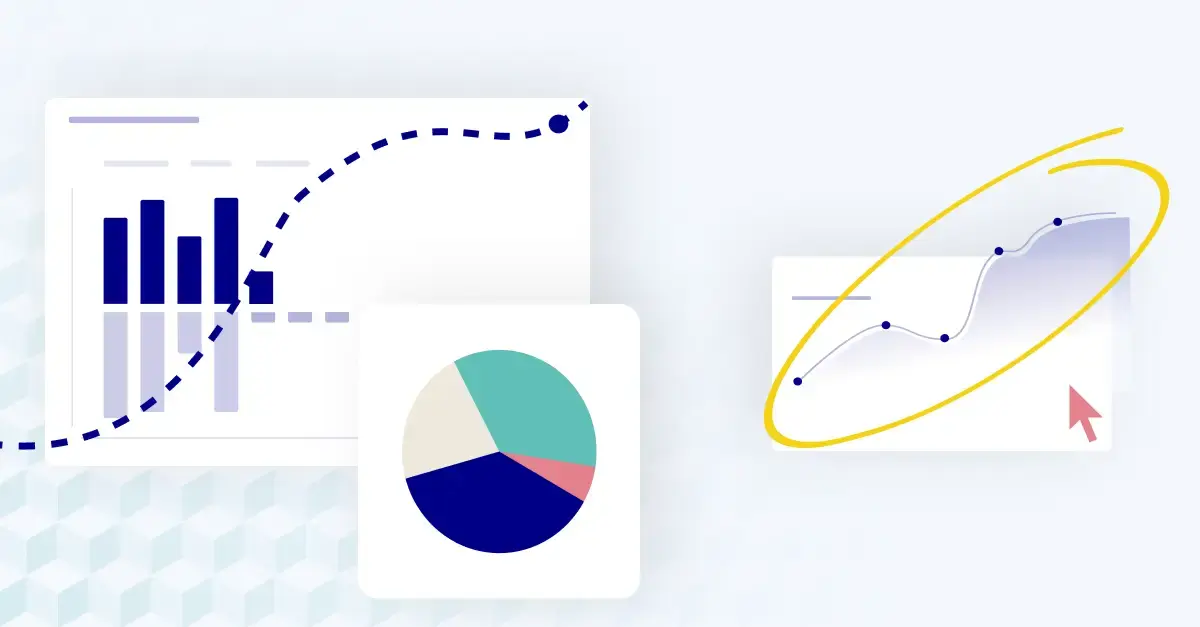
BLOG
The 18 best financial forecasting software solutions for FP&A teams [in 2024]
Read more

-
Financial leverage
Use of borrowed funds (debt) to finance the acquisition of assets, with the expectation that the income or capital gains will exceed the borrowing cost.
-
Financial modeling
Process of creating a summary of a company's expenses and earnings in the form of a spreadsheet.
Read moreWant to learn more? Check out the resources below:
BLOG
11 best financial modeling software [2024]
Read more

-
Financial planning
Process of determining how a business will afford to achieve its strategic goals and objectives.
Read moreWant to learn more? Check out the resources below:
BLOG
Best Financial Planning Software in 2025: Top Picks for Businesses
Read more

-
Financial planning & analysis (FP&A)
This is a corporate function focused on financial forecasting, budgeting, and comprehensive analysis to support strategic decision-making.
Read moreWant to learn more? Check out the resources below:
BLOG
What is FP&A (financial planning & analysis)? 2024 Guide
Read more
%3F%202024%20Guide.webp)
BLOG
What is financial planning and analysis (FP&A) software?
Read more
%20software%3F.webp)
-
Financial risk management
Practice of protecting economic value in a firm by managing exposure to risk, particularly credit and market risk.
Read moreWant to learn more? Check out the resources below:
BLOG
Navigating financial risk: tools and strategies for today’s finance leaders
Read more

-
Financial statement analysis
Process of reviewing and analyzing a company's financial statements to make better economic decisions.
-
Fiscal year
One-year period that companies and governments use for financial reporting and budgeting.
-
Fixed asset turnover
Efficiency ratio that indicates how well or efficiently a business uses fixed assets to generate sales.
-
Fixed assets
Long-term tangible assets used in a company's operations with a useful life of more than one year.
-
Fixed charge
Any type of fixed expense that recurs on a regular basis.
-
Fixed charge coverage
Ratio that indicates a firm's ability to meet fixed financing expenses such as interest and leases.
-
Fixed costs
Business expenses that are not dependent on the level of goods or services produced.
-
Forecasting
Process of making predictions about the future based on past and present data.
Read moreWant to learn more? Check out the resources below:
BLOG
Budgeting and forecasting: a quick and easy guide
Read more
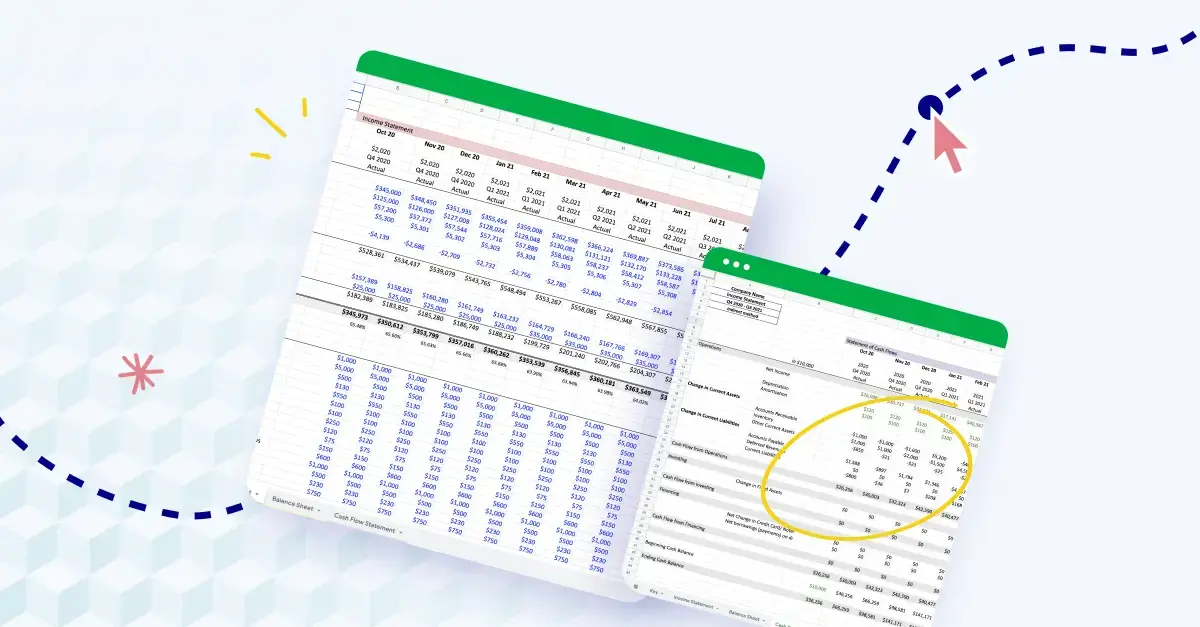
-
Foreign exchange exposure
Risk of a firm's financial position changing due to changes in exchange rates.
-
Foreign exchange rate (FX)
The fluctuating rate at which one currency can be exchanged for another.
-
Foreign exchange risk
Risk of financial loss due to fluctuations in foreign exchange rates.
-
Free cash flow (FCF)
Amount of cash a company generates after accounting for capital expenditures.
Read moreWant to learn more? Check out the resources below:
BLOG
Free cash flow: a key metric for financial health
Read more

-
Fundamental analysis
Process of measuring a security's intrinsic value by examining related economic and financial factors.
-
Funding
Financial support or resources provided for activities, programs, or projects.
-
Futures and options
Financial instruments giving the buyer the right, but not the obligation, to buy or sell an asset at a set price on a future date.
-
GAAP (Generally Accepted Accounting Principles)
Collection of commonly-followed accounting rules and standards for financial reporting.
-
Gearing ratio
Financial ratio that compares owner's equity to borrowed funds.
-
Going concern
Accounting principle that a company will continue to operate in the foreseeable future.
-
Goodwill
Intangible asset that arises when one company purchases another for a premium value.
Read moreWant to learn more? Check out the resources below:
BLOG
Goodwill impairment: the value of a name
Read more

-
Gross income
Total income from all sources before deductions or taxes.
Read moreWant to learn more? Check out the resources below:
BLOG
Net income vs gross income: what's the difference? (and how to calculate)
Read more
.webp)
-
Gross margin
Difference between revenue and cost of goods sold divided by revenue, expressed as a percentage.
-
Gross profit
Company's total revenue minus its cost of goods sold, representing the profit made before deducting operating expenses.
Read moreWant to learn more? Check out the resources below:
BLOG
Gross profit: Definition and gross profit equation
Read more

BLOG
How to calculate gross profit: A guide for finance leaders
Read more

-
Growth rate
Measure of a company's or industry's financial performance over a specific period, typically annually.
-
Headcount planning (or workforce planning)
An assessment of current business conditions to plan for future staffing needs.
Read moreWant to learn more? Check out the resources below:
BLOG
What is headcount forecasting? [Free headcount forecasting Excel template]
Read more

-
Hedging
Use of financial instruments or market strategies to offset the risk of any adverse price movements.
-
Horizontal analysis
Financial analysis technique that shows changes in the amounts of corresponding financial statement items over a period.
-
IFRS (International Financial Reporting Standards)
Global accounting standards for preparing financial statements.
-
Impairment
Accounting principle describing a permanent reduction in the value of a company's asset.
-
Income recognition
Accounting principle that dictates the process and timing by which revenue is recorded and recognized as income.
-
Income statement
Financial statement showing a company's revenues and expenses over a specific period.
-
Income tax
Tax levied by a government directly on income, especially an annual tax on personal income.
-
Indirect costs
Costs not directly traceable to a specific project or activity, such as overhead costs.
-
Inflation accounting
Accounting practice that factors in the impact of inflation on recorded financial statements.
-
Initial public offering (IPO)
The first time that the stock of a private company is offered to the public.
-
Interest coverage ratio
Measure of a company's ability to meet its interest payments.
-
Internal rate of return (IRR)
Discount rate that makes the net present value (NPV) of all cash flows equal to zero.
Read moreWant to learn more? Check out the resources below:
BLOG
IRR vs. XIRR: What's the difference? When do I use them?
Read more

-
Inventory
Company's raw materials, work-in-progress goods, and completely finished goods.
-
Inventory costing
Method of assigning costs to inventory and cost of goods sold.
-
Inventory management
Supervision of non-capitalized assets (inventory) and stock items.
-
Inventory turnover
Ratio showing how many times a company's inventory is sold and replaced over a given period.
-
Investment
Purchase of goods that are not consumed today but used for future wealth generation.
-
Investment appraisal
Collection of techniques used to identify the attractiveness of an investment.
-
Investment banking
Division of banking that deals with capital creation for other companies, governments, and other entities.
-
Joint venture
Business arrangement where two or more parties agree to pool their resources for a specific task or business activity.
-
Key performance indicator (KPI)
Quantifiable measure used to evaluate the success of an organization.
Read moreWant to learn more? Check out the resources below:
BLOG
PSA: Not all metrics are KPIs - best practices
Read more

BLOG
10 KPIs finance leaders need to track for organizational health
Read more

-
Leverage
Use of borrowed capital for investment, expecting the profits made to be greater than the interest payable.
-
Leverage ratios
Financial ratios that measure the degree of a company's use of borrowed funds.
-
Leveraged buyout (LBO)
Acquisition of another company using a significant amount of borrowed money.
-
Liquidity
Availability of liquid assets to a company and the ability to convert an asset to cash quickly.
-
Liquidity analysis
Assessment of a company's ability to meet its short-term obligations.
-
Liquidity management
Process of managing the liquidity of a firm to ensure it has the necessary cash flow.
-
Liquidity premium
Extra amount of return that investors demand for investing in non-liquid assets.
-
Liquidity ratio
Type of financial ratio used to determine a company's ability to pay off its short-terms debts obligations.
-
Loan covenant
Conditions in a loan agreement that the borrower must comply with.
-
Management accounting
Process of preparing management reports and accounts that provide accurate financial and statistical information.
-
Management reporting
Provision of financial information and business metrics to managers within organizations.
-
Marginal benefit
Additional satisfaction or utility that a person receives from consuming an additional unit of a good or service.
-
Marginal cost
Cost added by producing one additional unit of a product or service.
-
Market analysis
Study of the attractiveness and the dynamics of a special market within a special industry.
-
Market capitalization
Total market value of a company's outstanding shares of stock.
-
Market risk
Risk of losses in investments due to movements in market factors like interest rates, stock prices, or currencies.
-
Market value added (MVA)
Difference between the market value of a company and the capital contributed by investors.
-
Materiality (accounting)
The importance of financial information in influencing the decision of an investor or creditor.
-
Maturity (finance)
The final payment date of a loan or other financial instrument.
Read moreWant to learn more? Check out the resources below:
BLOG
Transform your finance team into strategic business partners with Cube's Finance Acceleration Framework™️
Read more

-
Mergers & acquisitions (M&A)
Aspects of corporate strategy, corporate finance and management dealing with the buying, selling, dividing and combining of different companies.
-
Month-end close
The process of reviewing and reconciling financial activities for the previous month.
Want to learn more? Check out the resources below:
Read more
-2.png)
-
Net asset value (NAV)
Value of a fund's assets minus the value of its liabilities.
-
Net income
Company's total earnings, reflecting the amount of profit it has made.
Read moreWant to learn more? Check out the resources below:
BLOG
Net income vs gross income: what's the difference? (and how to calculate)
Read more
.webp)
-
Net operating income (NOI)
Total income from property operations minus the total operating expenses.
-
Net present value (NPV)
Difference between the present value of cash inflows and the present value of cash outflows.
-
Net profit
The amount of money a company has left after all expenses, taxes, and costs have been subtracted from total revenue. Also known as the "bottom line."
Read moreWant to learn more? Check out the resources below:
BLOG
Revenue vs profit: What’s the difference?
Read more

-
Operating cash flow
Amount of cash generated by a company's normal business operations.
Read moreWant to learn more? Check out the resources below:
BLOG
Optimizing operating cash flow: a practical guide for finance leaders
Read more

-
Operating cycle
Average period of time required for a business to make an initial outlay of cash to produce goods, sell the goods, and receive cash from customers.
-
Operating expense ratio (OER)
A measure of what it costs to operate a piece of property compared to the income that the property brings in.
-
Operating expenses
Expenses that are not directly tied to the production of goods or services.
-
Operating income
Amount of profit realized from a business's operations after deducting operating expenses.
-
Operating leverage
Degree to which a firm or project can increase operating income by increasing revenue.
-
Operating margin
Ratio used to measure a company's pricing strategy and operating efficiency.
-
Opportunity cost
Cost of an alternative that must be forgone in order to pursue a certain action.
-
Overhead costs
Ongoing business expenses not directly attributed to creating a product or service.
-
P/E growth ratio (PEG)
Valuation metric for determining the relative trade-off between the price of a stock, its earnings per share, and the company's expected growth.
-
Payback period
Time required for the return on an investment to repay the original cost.
-
Payroll accounting
Management of a company's employee compensation and related taxes, benefits, and other payments.
-
Performance budgeting
Budgeting method that focuses on the outcomes and results of the activities.
-
Performance metrics
Measurements that evaluate the effectiveness of a company or its investments.
-
Portfolio management
Process of making decisions about investment mix and policy, aligning investments to objectives, and balancing risk against performance.
-
Prepaid expenses
Future expenses that have been paid in advance.
-
Price earnings ratio (P/E)
Valuation ratio of a company's current share price compared to its per-share earnings.
-
Price to book ratio (P/B ratio)
Valuation ratio comparing a firm's market value to its book value.
-
Prime cost
Total cost of direct materials and direct labor for manufacturing.
-
Pro forma financial statements
Financial statements based on hypothetical scenarios or assumptions.
Read moreWant to learn more? Check out the resources below:
BLOG
How to create & use pro forma statements
Read more

BLOG / TEMPLATE
Pro Forma Template: Free Excel Budget Templates
Read more

-
Profit and loss statement (P&L)
Financial statement that summarizes revenues, costs, and expenses incurred during a specific period.
Read moreWant to learn more? Check out the resources below:
TEMPLATE
Budget vs. Actual (Excel Template) | P&L Statements
Read more

-
Profit margin
Financial metric used to assess a company's financial health by revealing the proportion of money left over from revenues after accounting for certain costs.
-
Profitability ratios
Financial metrics used to assess a business's ability to generate earnings.
Read moreWant to learn more? Check out the resources below:
BLOG
Profitability analysis: slicing the pie
Read more

-
Project finance
Long-term financing of infrastructure and industrial projects based on the projected cash flows.
-
Quick assets
Assets that can be quickly converted into cash.
-
Quick ratio
Indicator of a company's short-term liquidity position, measuring its ability to meet short-term obligations.
Read moreWant to learn more? Check out the resources below:
BLOG
Quick ratio vs. current ratio: the quick difference
Read more

-
Real options valuation
Method of valuing the choices that managers will have in the future.
-
Regulatory compliance
Adherence to laws, regulations, guidelines, and specifications relevant to business processes.
-
Retained earnings
Portion of net earnings not paid out as dividends but reinvested in the business.
Read moreWant to learn more? Check out the resources below:
BLOG
How to calculate retained earnings: insights for finance leaders
Read more

-
Return on assets (ROA)
Indicator of how profitable a company is relative to its total assets.
-
Return on capital employed (ROCE)
Financial ratio that measures a company’s profitability and the efficiency with which its capital is employed.
-
Return on equity (ROE)
Measure of the profitability of a business in relation to the equity.
Read moreWant to learn more? Check out the resources below:
BLOG
Return on equity: Formula, calculation, and use cases
Read more

-
Return on investment (ROI)
Performance measure used to evaluate the efficiency of an investment.
-
Return on net assets (RONA):
A financial ratio that measures a company's efficiency in generating profit from its net assets.
-
Revenue
Income that a business has from its normal business activities, usually from sales of goods and services.
Read moreWant to learn more? Check out the resources below:
BLOG
Revenue vs profit: What’s the difference?
Read more

-
Revenue per employee
Measure of how efficiently a company is utilizing its employees.
-
Revenue recognition
Principle that revenue should be recognized and recorded when it is earned, not necessarily when it is received.
-
Risk assessment
Identification and analysis of relevant risks to achievement of an organization's objectives, forming a basis for determining how the risks should be managed.
-
Risk management
Process of identification, analysis, and acceptance or mitigation of uncertainty in investment decisions.
Read moreWant to learn more? Check out the resources below:
BLOG
Risk management in financial planning: mitigating uncertainties for a stronger future
Read more

-
Risk-adjusted return
Investment's return analyzed in the context of the risk involved in producing that return.
-
Rolling forecast
An alternative planning cycle using a continuous period that allows companies to respond to changes in market or economic conditions quickly.
Read moreWant to learn more? Check out the resources below:
BLOG
When is a rolling forecast the right strategy for my business?
Read more

TEMPLATE
Rolling Forecast Template: 12-Month Forecasts (Excel Template)
Read more
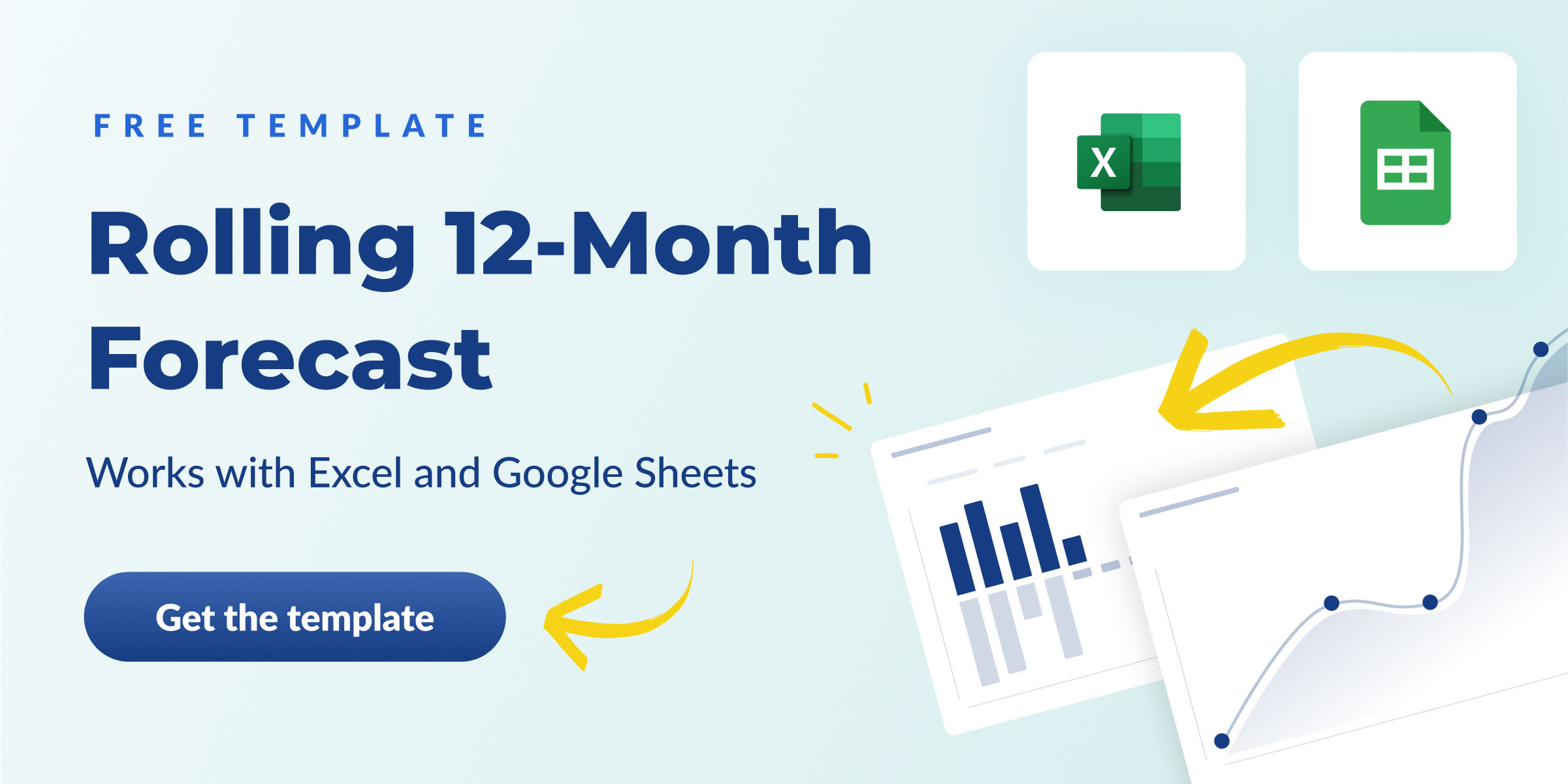
-
Sales forecasting
Process of estimating future sales, crucial for making informed business decisions and predicting short-term and long-term performance.
Read moreWant to learn more? Check out the resources below:
BLOG
How to calculate projected sales: a guide for FP&A leaders
Read more

BLOG
Best sales forecasting software in 2025: Top picks for business
Read more

-
Sarbanes-Oxley Act (SOX)
U.S. law aimed at protecting investors from fraudulent financial reporting by corporations.
-
Scenario analysis or scenario planning
Process of analyzing possible future events by considering alternative possible outcomes.
Read moreWant to learn more? Check out the resources below:
BLOG
Scenario planning: strategies, techniques, & examples [2024]
Read more

-
Securitization
Process of converting an illiquid asset into a security.
-
Segment margin
Measure of the profitability of different segments of a company.
-
Segment reporting
The practice of dividing a company's financial data into discrete operating segments for reporting purposes.
-
Sensitivity analysis
Technique used to determine how different values of an independent variable will impact a particular dependent variable under a given set of assumptions.
Read moreWant to learn more? Check out the resources below:
BLOG
Why is sensitivity analysis important in strategic finance?
Read more

-
Share buyback
The repurchase of shares by the company that issued them, a way of returning money to investors.
-
Shareholder
An individual, company, or institution that holds shares in a company.
-
Shareholder equity
The amount that would be returned to shareholders if all the company's assets were liquidated and all its debts repaid.
-
Solvency
Ability of a company to meet its long-term debts and financial obligations.
-
Standard costing
Accounting technique that uses standard costs for direct material, labor, and overhead.
-
Stock options
Contracts which give the holder the right, but not the obligation, to buy or sell stocks at a specific price.
-
Strategic analysis
Process of conducting research on a company and its operating environment to formulate a strategy.
-
Strategic financial management
Managing a company's finances with a strategy to achieve its business objectives.
Read moreWant to learn more? Check out the resources below:
BLOG
What is strategic financial planning and management?
Read more

BLOG
Strategic finance: An exhaustive and practical guide for CFOs in 2024
Read more

-
Strategic planning
Organizational management activity used to set priorities, focus energy and resources, and strengthen operations.
Read moreWant to learn more? Check out the resources below:
BLOG
The essential elements of a strategic plan: explained
Read more

-
Sunk cost
Cost that has already been incurred and cannot be recovered.
-
Sustainable growth rate
Maximum rate at which a company can grow its sales, earnings, and dividends without increasing its leverage.
-
Tax planning
Analysis and arrangement of a person's financial situation to maximize tax breaks and minimize tax liabilities.
-
Time value of money
Concept that money available now is worth more than the same amount in the future due to its earning potential.
-
Total cost of ownership (TCO)
Financial estimate intended to help buyers and owners determine the direct and indirect costs of a product or system.
-
Trade credit
The credit extended to a buyer by a supplier who allows them to purchase goods or services and pay for them later.
-
Treasury management
The administration of a company's liquidity, investments, and risk management.
-
Trial balance
A bookkeeping worksheet in which the balances of all ledgers are compiled into debit and credit columns.
-
Value at risk (VaR)
Statistical technique used to measure and quantify the level of financial risk within a firm over a specific time frame.
-
Variable costs
Corporate expenses that vary in direct proportion to the quantity of output.
Read moreWant to learn more? Check out the resources below:
BLOG
9 variable expenses examples you should know
Read more

-
Variable interest entities (VIE)
An entity in which the investor holds a controlling interest that is not based on a majority of voting rights.
-
Variance analysis
Quantitative investigation of the difference between actual and planned behavior.
Read moreWant to learn more? Check out the resources below:
BLOG
Variance reporting: What is it + how to read/write a variance report
Read more

-
Venture capital
Financing that investors provide to startup companies and small businesses believed to have long-term growth potential.
-
Vertical analysis
Method of financial statement analysis in which each entry for each of the three major categories of accounts (assets, liabilities and equities) in a balance sheet is represented as a proportion of the total account.
Read moreWant to learn more? Check out the resources below:
BLOG
Vertical analysis: a deep dive into financial statement evaluation
Read more
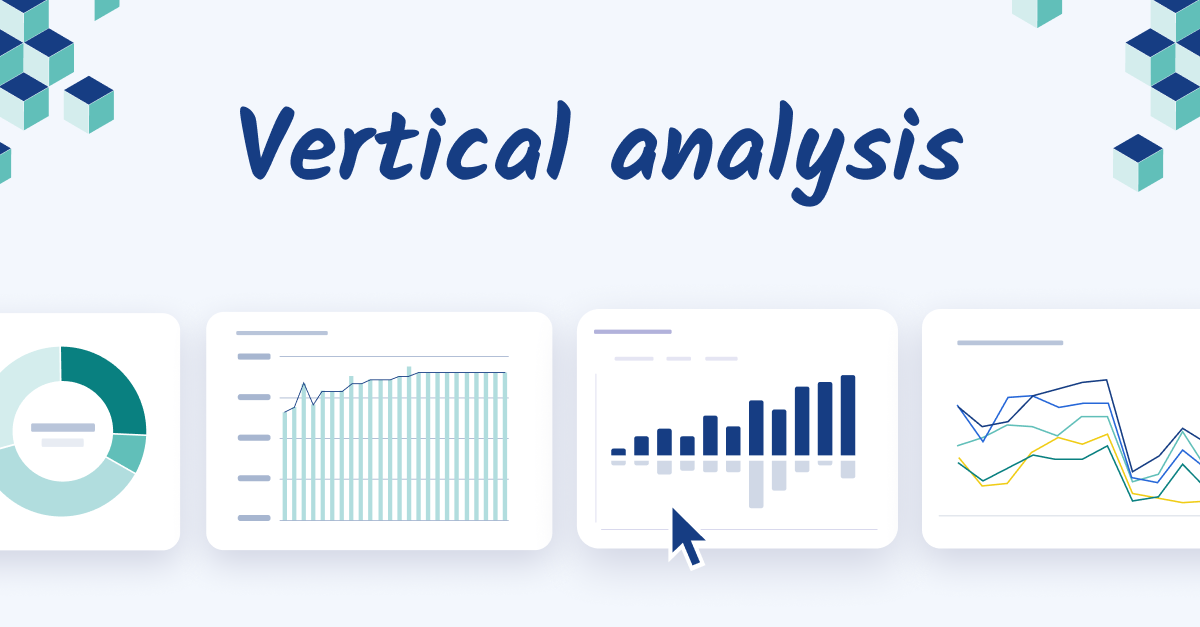
-
Working capital
Measure of a company's operational efficiency and short-term financial health.
Read moreWant to learn more? Check out the resources below:
BLOG
Net working capital: the basics, how to calculate, and how to improve
Read more

-
Working capital management
Management of a firm's current assets and liabilities to ensure it has sufficient cash flow.
-
Working capital ratio
Indicator of whether a company has enough short-term assets to cover its short-term debt.
-
Yield curve
Graph showing the relationship between bond yields and maturities.
-
Z-score (Finance)
Statistical measure that quantifies the distance (in standard deviations) a data point is from the mean of a data set.
-
Zero-based budgeting
Method of budgeting where all expenses must be justified and approved for each new period.
Read moreWant to learn more? Check out the resources below:
BLOG
Zero-based budgeting: justifying every line item in the company budget
Read more



.png)


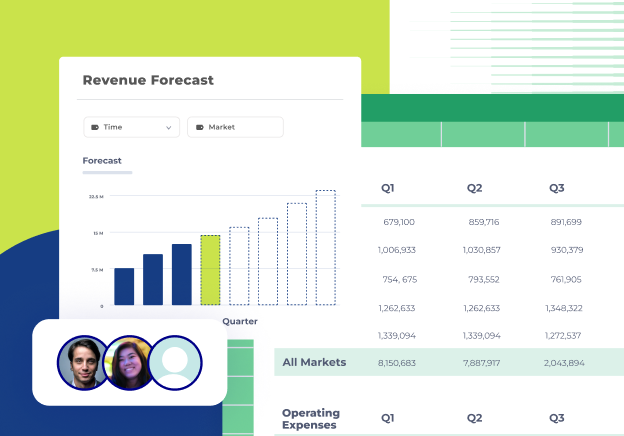






.png)